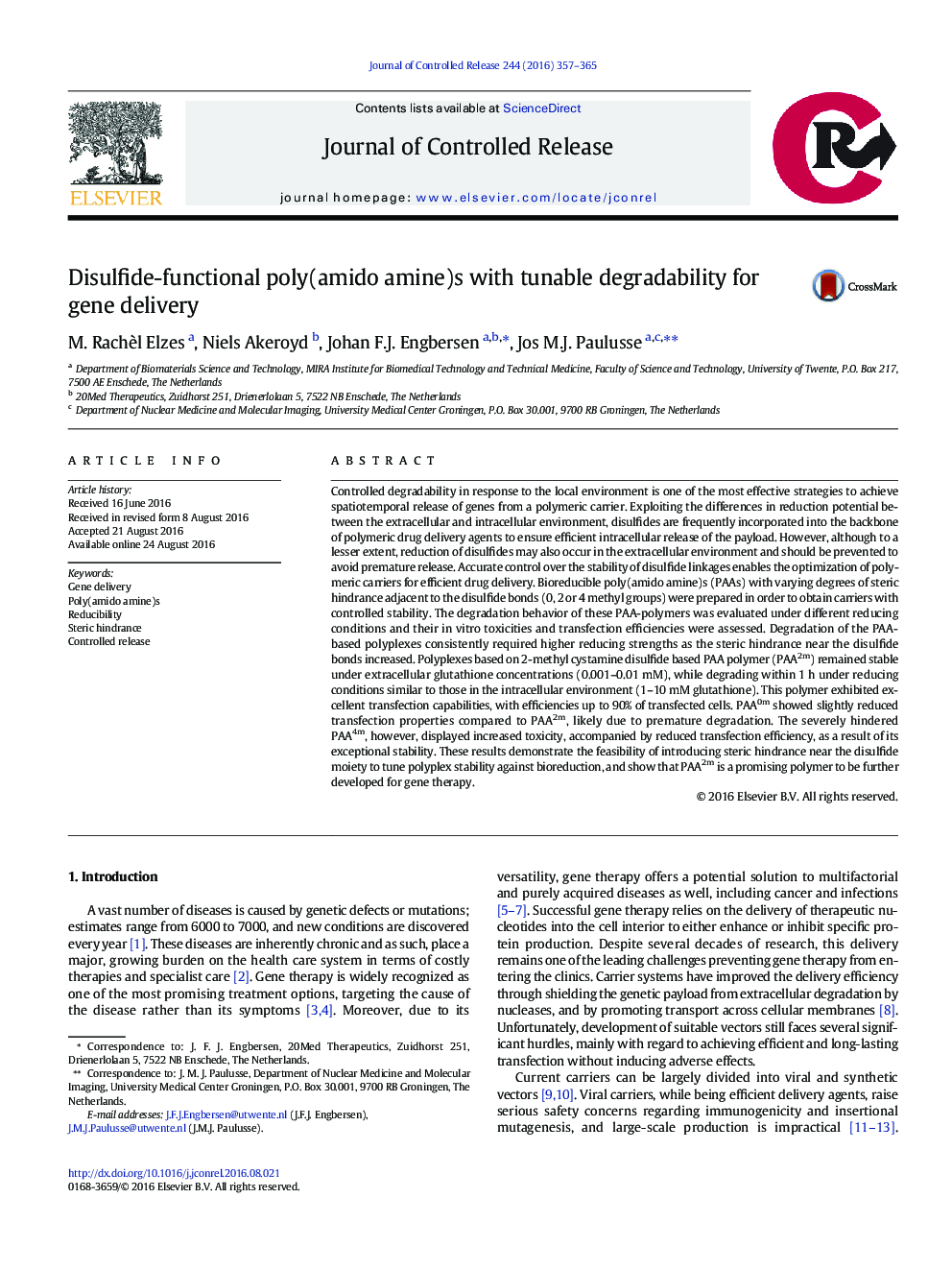| کد مقاله | کد نشریه | سال انتشار | مقاله انگلیسی | نسخه تمام متن |
|---|---|---|---|---|
| 5434055 | 1398083 | 2016 | 9 صفحه PDF | دانلود رایگان |
Controlled degradability in response to the local environment is one of the most effective strategies to achieve spatiotemporal release of genes from a polymeric carrier. Exploiting the differences in reduction potential between the extracellular and intracellular environment, disulfides are frequently incorporated into the backbone of polymeric drug delivery agents to ensure efficient intracellular release of the payload. However, although to a lesser extent, reduction of disulfides may also occur in the extracellular environment and should be prevented to avoid premature release. Accurate control over the stability of disulfide linkages enables the optimization of polymeric carriers for efficient drug delivery. Bioreducible poly(amido amine)s (PAAs) with varying degrees of steric hindrance adjacent to the disulfide bonds (0, 2 or 4 methyl groups) were prepared in order to obtain carriers with controlled stability. The degradation behavior of these PAA-polymers was evaluated under different reducing conditions and their in vitro toxicities and transfection efficiencies were assessed. Degradation of the PAA-based polyplexes consistently required higher reducing strengths as the steric hindrance near the disulfide bonds increased. Polyplexes based on 2-methyl cystamine disulfide based PAA polymer (PAA2m) remained stable under extracellular glutathione concentrations (0.001-0.01Â mM), while degrading within 1Â h under reducing conditions similar to those in the intracellular environment (1-10Â mM glutathione). This polymer exhibited excellent transfection capabilities, with efficiencies up to 90% of transfected cells. PAA0m showed slightly reduced transfection properties compared to PAA2m, likely due to premature degradation. The severely hindered PAA4m, however, displayed increased toxicity, accompanied by reduced transfection efficiency, as a result of its exceptional stability. These results demonstrate the feasibility of introducing steric hindrance near the disulfide moiety to tune polyplex stability against bioreduction, and show that PAA2m is a promising polymer to be further developed for gene therapy.
250
Journal: Journal of Controlled Release - Volume 244, Part B, 28 December 2016, Pages 357-365
